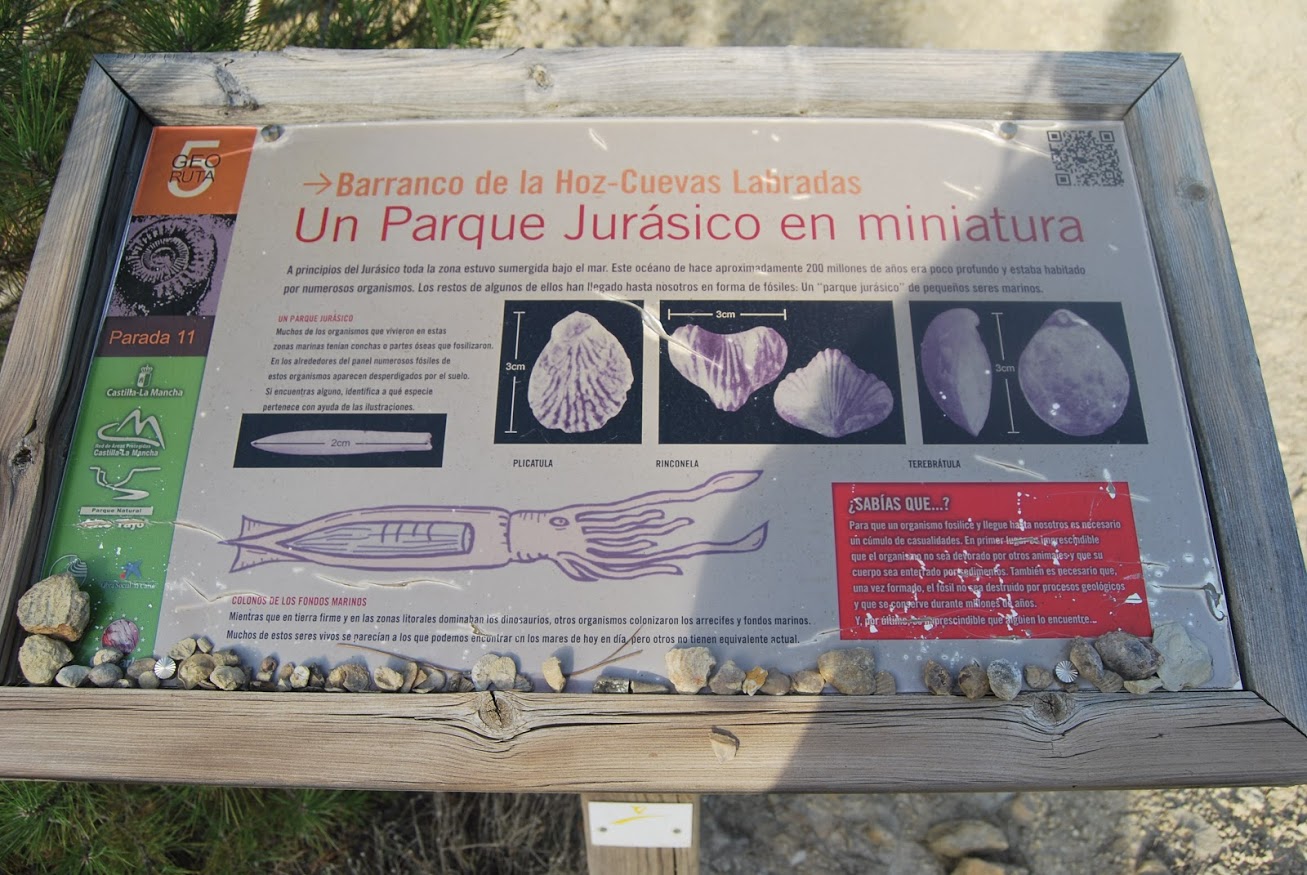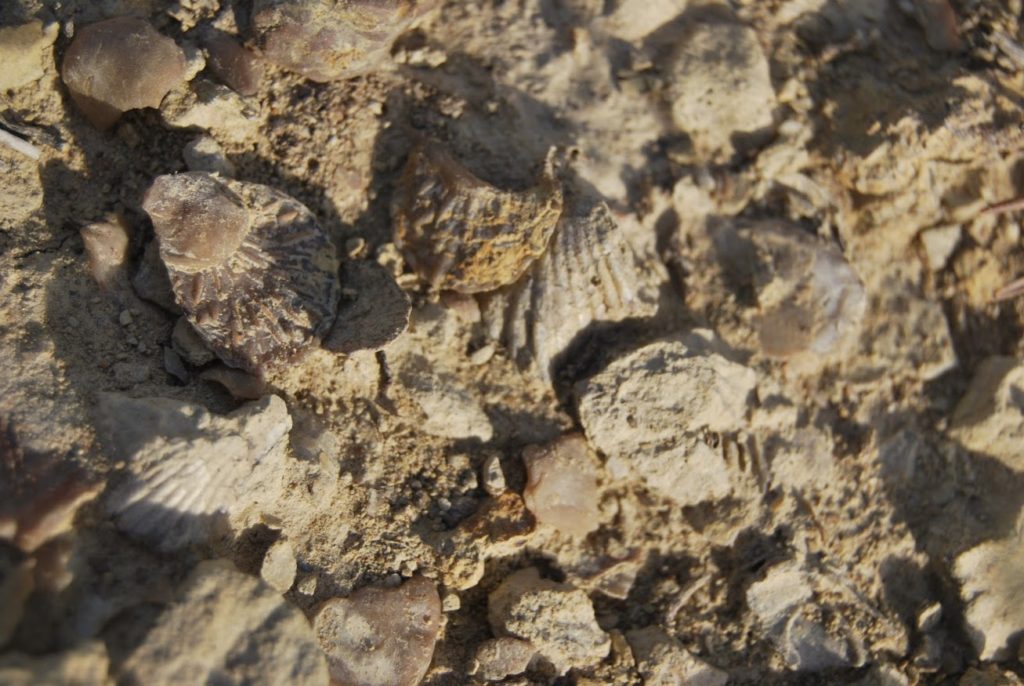Cuevas Labradas fossil site
Fossil site with explanatory poster

Dirección
Cuevas Labradas turnoff from Puente de San Pedro
GPS
40.821373962581, -2.1254504658982
Marine fossil site
Carved Cave Fossils
The environment of Cuevas Labradas has a small deposit where it is easy to find fossils of marine invertebrates Jurassic. These fossils show how these rocks were formed under a warm, shallow, nutrient-rich sea, which favoured the presence of marine organisms. Many of them had shells and mineralised parts which, thanks to the process of fossilisation, have survived to the present day.
If you look on the ground you can see that what they look like simple stones are fossils of ancient marine organisms. Among the most abundant are some species of brachiopods as the terebatulas and the rinconelas and some bivalve molluscs such as the plicatulasrelatives of today's scallops. All of them lived on the seabed and filtered the water in search of nutrients for their metabolism. It is also common to find fossil remains in the shape of a pencil or projectile called a belemnitesThe only fossilised hard part of an organism very similar to the squid we know today.
<< How to get there?
We can take a look at this fossil site from the bridge of San Pedro, taking the road in the direction of Molina de Aragón until we reach the turn-off that starts us towards Cuevas Labradas. At the beginning of this track you will find our site, which is well signposted. There is not much parking space, so if you are interested in visiting the site, we recommend that you make the georuta 5which shows us more corners like this one.


